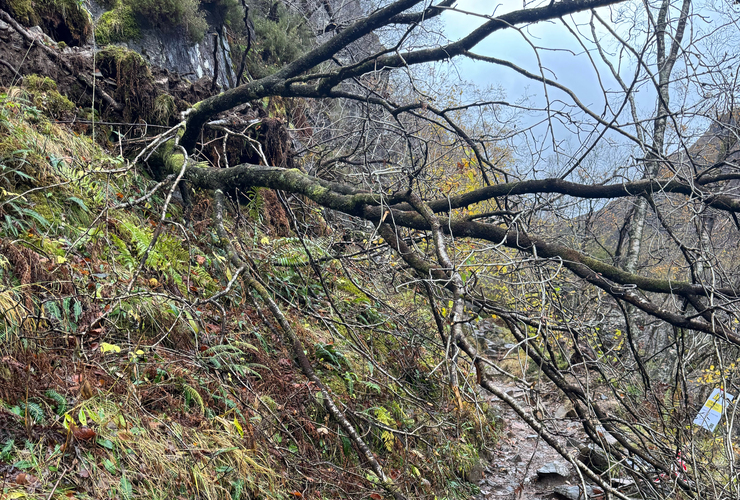Field Notes: The value of natural assets
Nikki Gordon has written a thoughtful piece about the environment and economics on the back of the long awaited Dasgupta Review

The recently released and much anticipated Dasgupta Review on the Economics of Biodiversity considers the value of natural assets and how this can improve land management practices, climate change and the net zero agenda.
Ever since the industrial revolution, the rise in international wealth or GDP has been at the cost of our environment. Mankind has benefitted immensely from the degradation of natural assets used to literally fuel our growth and prosperity, lifting a large number of people out of poverty, and giving us a material existence beyond the wildest dreams of our predecessors.
“Accumulating produced and human capital at the expense of natural capital is what economic growth and development has come to mean for many people”. – Prof. Sir Partha Dasgupta
Decades of damage to biodiversity means that there needs to be a fundamental shift in the way we pursue economic growth and prosperity if we are to try to repair the damage to the planet’s biodiversity and stop runaway climate change. It is often overlooked that nature is a part of the economy, but it is a crucial component of the resources the economy allocates.
However, the trade-off between more economic development and less wildness - that has been the cornerstone of society for so many years - is no longer being ignored. The degradation of nature is starting to impact economic growth and the long-awaited Dasgupta Review highlights just how damaging our unsustainable relationship with nature will be to the prosperity of current and future generations. All around the world, balance sheets need to include our natural assets so that global economic growth takes account of environmental sustainability.
Climate change is the most obvious example of the damage we have caused, coupled with the devastating impacts of COVID-19 - of which land-use change and species exploitation was a major driver - eclipsing countless other examples such as the disappearance of insects and pollinators; rivers full of agricultural run-off; depleted soils now reliant on chemical enhancement and genetically modified seeds; plastic oceans; fragmented landscapes; and the various mental and physical health impacts on humanity that the loss of nature can trigger. As tipping points are reached, one incremental loss after another has inevitably caused systemic consequences. As our world gets less green, so too does it get less prosperous.
Economic environmental enhancement
As new generations become more aware and consequences become more apparent, the principle of environmental protection has shifted from a protracted long-term goal to a shorter-term action plan at the level of governments, companies and of individuals who all are obliged to now take into account what we are doing to biodiversity and sustainability. Voters, shareholders and the conscientious are leading a new way of thinking about the future definition of growth.
The principle that growth should come at an environmental cost is no longer acceptable accountancy and must be superseded by the principles of non-degradation: with true costs taken into account, the offsetting of unavoidable harm by a positive margin (the concept of net environmental gain), and implementation of the polluter pays principle – that those whose actions cause harm should pay those costs.
“Why should it be more acceptable to pollute than to steal? Both take something from others that they do not pay for”. – Prof. Sir Deiter Helm
However, the inefficiencies of current environmental policies are astonishing. Carbon emissions do not even have a proper price yet. Nowhere is it more significant to apply these principles than to climate change and net zero. We must incorporate them into the wider environmental context in order to satisfy climate obligations, while being aware of the natural capital dimensions. For example, net zero may be a disaster if it results in land rushes, poor land management practices such as inappropriate forestation, and large, absentee landowners.
A good example of the economic environmental enhancement principle is the UK government’s introduction of the Environmental Land Management (ELM) scheme. This is the cornerstone of a new agricultural policy which sets out mechanisms for farmers and other land managers to be paid for delivering public goods such as clean air; clean and plentiful water; thriving plants and wildlife; protection from environmental hazards; beauty, heritage and engagement with the environment; and a reduction of and adaptation to climate change. This phases out more than £3 billion being spent on subsidising British farmers each year, £2 billion of which went on paying them for the possession of their land. The new ELM scheme is founded on the principle of ‘public money for public goods’ and may provide a powerful way of achieving the goals of the 25 Year Environment Plan and the UK’s commitment to net zero emissions by 2050, while supporting the rural economy (although it remains to be seen whether it will have sufficient ambition).
While complex, including the environment and economics in the same context will lead to nature-based solutions to land management, natural carbon sequestration and the creation of natural capital markets to help bring a net zero agenda into play. The Dasgupta Review provides the path for markets to ensure that public goods are delivered efficiently, that polluters really pay, and that compensation for damage is enforced.
- Read the headline messages of The Dasgupta Review.
Nikki Gordon is the Trust's new carbon officer.
Photo of Barnacle Geese (Branta leucopsis) in flight at sunset by Danny Green/2020Vision


